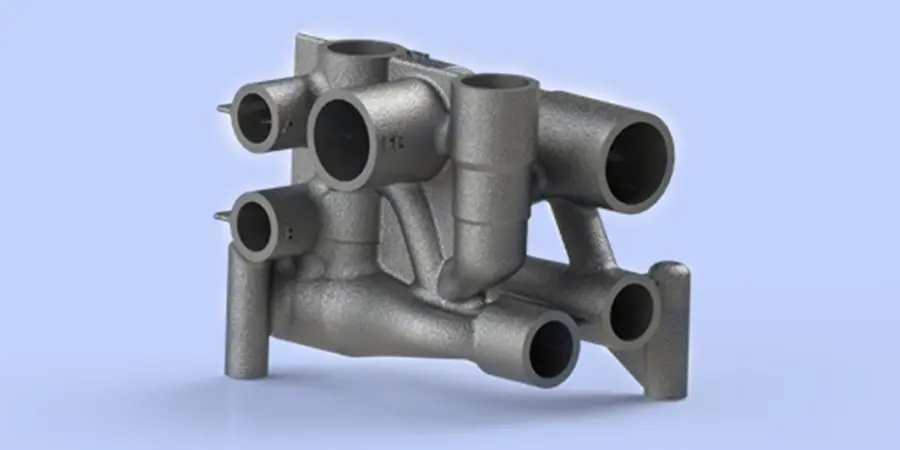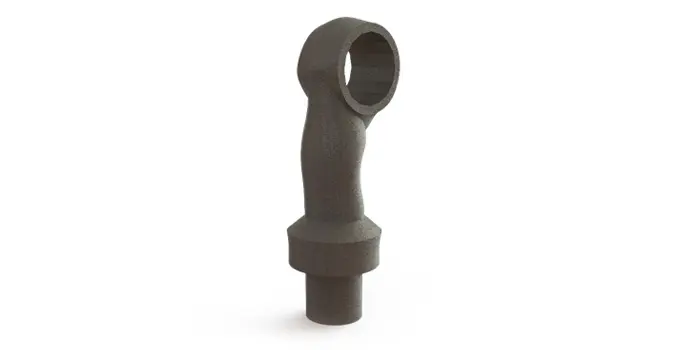
Benefits of AM Technology in Hydraulics
Additive manufacturing, also known as AM or 3D printing, is perhaps most widely used to produce components that deal with flow in some way. As these components are often difficult to manufacture using conventional methods. What makes things interesting is that flow efficiency can be significantly improved with the help of AM, for example in hydraulics.
Hydraulics can be defined as “force being transferred by the flow and pressure of a fluid”. Typically, energy is applied at a certain force to a system in order to achieve work. This concept is by no means a novelty, as hydraulics was introduced to machines for the first time already in the 1700s.
Despite this, hydraulic systems are by no means simple, and consist of dozens of components such as hydraulic pumps, reservoir tanks, pipes and hoses, controls and regulators, blocks, cylinders, and actuators, just to mention a few. However, a large amount of the overall power loss in a system can be located in parts where flow is manipulated in large extents. This power loss is converted mostly into heat and means that a separate cooling unit is needed. In other words, we use energy to first heat the system up, and immediately work to cool it down. And why is this? Simply because that is what we are used to doing.
How can AM technology decrease power loss?
Traditional hydraulic components make use of drilled holes and 90-degree angles. As a result, components are left with sharp edges that cause turbulence, noise, and above all power loss. A significant amount of these power losses could be avoided by using AM technology to manufacture smooth channels.

As the picture above illustrates, power loss in this example is reduced by 60%, even though the changes applied are minimal. In addition, the component is 90% lighter. All this is possible when the component is designed to be manufactured with additive manufacturing. To take full advantage of what AM can offer adding flow-optimization to the design process can result in up to 80 % reduction in power loss. An example of such a flow-optimized channel can be seen in the picture under. The model was designed using Ansys simulation software. As for flow channels, an optimal solution is by no means a round tube resembling a drill bit hole, but rather, an optimal shape is organic. Best compared to a strong river current or clouds moving across the sky.

Environmental Effects of Utilizing AM Technology
In practice, all the factors discussed above show how old-fashioned our way of thinking is and how conservative we are with our current ways of manufacturing components. Think of an end product, an industrial vehicle for example, where AM can affect energy efficiency of fuel consumption to the tune of hundreds of liters of fuel each year. Translating into possible operational cost savings of up to thousands of euros as well as emissions being reduced by nearly 10%. Simultaneously, parts can be manufactured using only as much of the material as is actually needed, making for lighter and smaller components.
So, what’s slowing AM adoption?
Metal components manufactured using AM are seldom ready-to-use without post-processing. Support material must be removed, component interfaces need to be machined and, in some cases, it is necessary to improve inner surfaces to meet flow or cleanliness criteria. But are these factors that still need solving? Personally, I do not think so. Components can be manufactured and solutions for the post-processing problems mentioned above already exist. In our experience, AM components can seldom compete with traditionally manufactured components when it comes to price, often even after AM-design. That is just how it is. However, it is wrong to merely compare costs of manufacturing without considering the bigger picture. Which is a more significant factor: a one-time low manufacturing cost or significantly lower operating costs?
What is actually in question, are company’s values, the return on capital invested into development, risk management and courage. Also at stack is the environment we live in and our unsustainable way of making components and using energy. Technology is ready for change, but are you?
More information:
Jasperi Kuikka
jasperi.kuikka@huld.io
+358 45 349 0665